We may receive a commission when you use our affiliate links. However, this does not impact our recommendations.
Antiquing Wood
This article originally appeared in the June 2007 of Popular Woodworking under the title “Antique Barn Finish.”
by Troy Sexton
pages 78-83
This is the furniture finish that fooled our local auctioneer, a man with 30 years of experience selling antique furniture and farm equipment.
I had bought a mower from the auctioneer and he was dropping it off at my workshop when he spotted one of my furniture pieces that sported what I call a barn finish.
He walked over to the piece and asked what I’d repaired on it. I replied that it wasn’t an antique that needed fixing; instead, I had just finished building it and was about to deliver it to a customer.
He didn’t believe me.
After a few minutes of debate, I finally turned the piece over to show him a spot of new, raw wood that was unfinished.
“In all my years,” he said, “I have never seen a finish like that.”
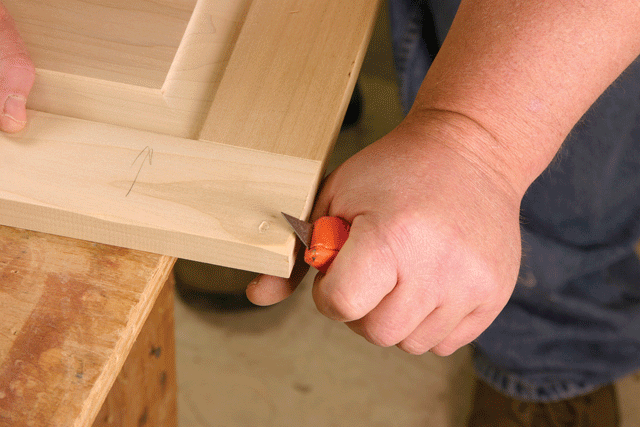 New Finish That Looks Old
New Finish That Looks Old
While I don’t think this finish would fool an expert on antique furniture, it is a convincing way to add centuries of patina to your projects so they will fit in with an older home or other pieces of antique furniture.
This finish is my favorite to do. You cannot mess it up. Even if you don’t like the final result, you can simply add another coat of lacquer and paint until you get the look you want. Every layer simply adds more texture to the project and makes the finish look better.
Unlike many antiqued painted finishes, this one is safe enough that I allow my daughter to do it. Other finish processes involve a stage where you char a layer of paint with a gas torch or by setting the piece on fire. I’ve tried those methods but I don’t like them. And I’m sure my insurance company would agree.
Instead, I use a high-temperature heat gun. Look for one that reaches 1,500° Fahrenheit – these are available at industrial supply stores. The 1,000°-degree heat guns will work, but the hotter one is better. Heat guns are a bit slower than a torch, but they’re safer. And I’ll show you how to save some time by skipping a coloring step that makes no difference to the finished look of the piece.
Whenever you use this finish, be sure to practice on a sample board at each stage before you move onto the finished project. That way you’ll see what the next step is going to look like. And when you are done, you’ll have a great sample board to keep.
Before you add color, the first step is to mimic 200 years of use and abuse to the piece. I use a utility knife to chamfer edges, a drill bit to create worm holes and an awl to make bite marks from a dog. To demonstrate lots of wear, use a chisel to imitate a mouse hole. Heat a tin can and place it on the wood to char it. At the end, beat it with a cluster of keys then sand the edges with a power sander.
Aging requires a little creative thinking to decide what areas of the project would see the most scuffing, but it will be obvious if you first look at some real antiques. Concentrate on the base, the knobs, mouldings, doors and drawers. Let the kids help – they’ll require little training.
Don’t Begin With Stain
At its heart, this finish begins with a layer of paint, then a coat of lacquer then another coat of paint. You then blister and scrape your top coat of paint and repeat the whole process again. Then, at the end, you wipe on a glaze to add grime and a coat of dull lacquer to seal it all in.
Some other antique finishes recommend that you start by staining the entire piece and then add the paint. I’ve done this many times myself, and I think you can skip that step. Any raw wood that you expose during the aging process will be colored by the glaze in the end. And in all my years of doing this finish, I’ve never had the finish peel, so I think a base coat of stain is unnecessary.
Begin by brushing on a coat of latex paint. (Hint: Allow the brush to fall on the floor and get some sawdust on it.) Let the paint dry. If some areas of the paint look thin, add a second coat.
Now spray on a coat of lacquer (or brush on a coat of brushing lacquer) and add another one or two coats of the same color paint. Let it dry and get your heat gun.
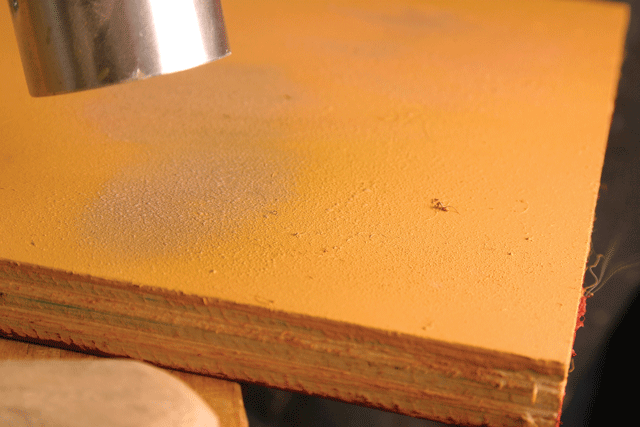 Lacquer Then Paint;
Lacquer Then Paint;
Blister Then Scrape
Hold the heat gun close to the surface and move it slowly across the piece. After a few minutes the paint will bubble and blister.
Use your judgment here. The more blistering, the more texture you’ll end up with. If you overdo it, simply add more paint and try the process again.
With the paint blistered, use a paint scraper to remove the bubbles. Get the surface somewhat smooth but don’t get too aggressive. The little ragged edges of paint you leave behind will add texture to the surface.
Now apply another coat of lacquer and brush on one or two coats of your second color of paint (see “Choosing Color” on page 83 for some ideas on color combinations).
Then blister the paint with your heat gun and scrape the bubbles away. This will reveal patches of your first color below.
If you don’t like the look, add more lacquer and paint; then blister and scrape it until you are pleased. Then take some worn sandpaper (the grit isn’t critical – but not too aggressive) and level the blistered surface to smooth over the really rough spots.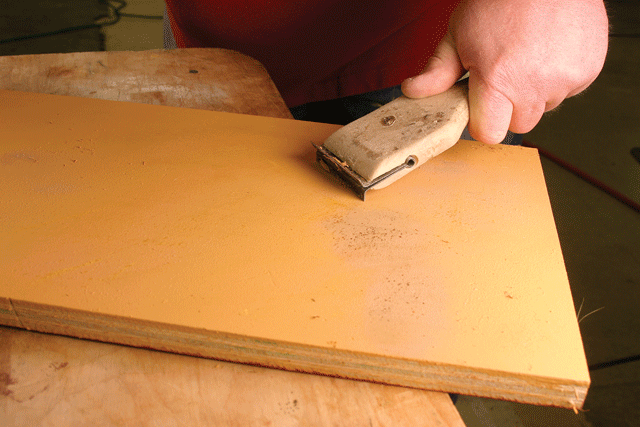
The final coloring step adds the real age. I wipe on a fast-drying brown glaze that is compatible with my lacquer. Glazes are available from professional paint stores. The exact color isn’t critical.
You could use a gel stain or liquid stain instead of a product labeled as glaze. But liquid stains soak into the paint more than I like and take longer to dry. (All coloring that takes place between coats of finish is technically glazing, but you can use a variety of products for the process.)
When the glaze is dry, add your final topcoat. I like a dull lacquer; gloss just wouldn’t be right.
The best part of this finish is that there is no wrong way to do it. If you’re not satisfied, put another coat of paint on. Every single layer makes it look better.
And what if you do something wrong and the finish starts to peel? No problem. Antique finishes peel. It might even look better in the end. PWM
— Troy Sexton
Click here for a full PDF of this article…
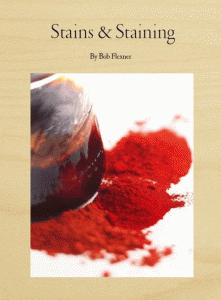 Want more information on staining wood? Check out “Stains and Staining” with Bob Flexner at shopwoodworking.com
Want more information on staining wood? Check out “Stains and Staining” with Bob Flexner at shopwoodworking.com
Here are some supplies and tools we find essential in our everyday work around the shop. We may receive a commission from sales referred by our links; however, we have carefully selected these products for their usefulness and quality.



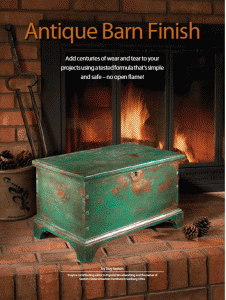
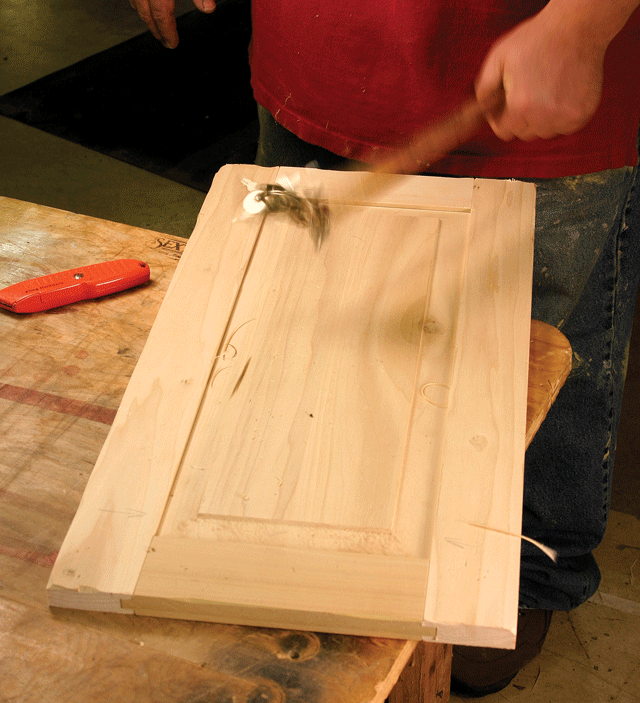
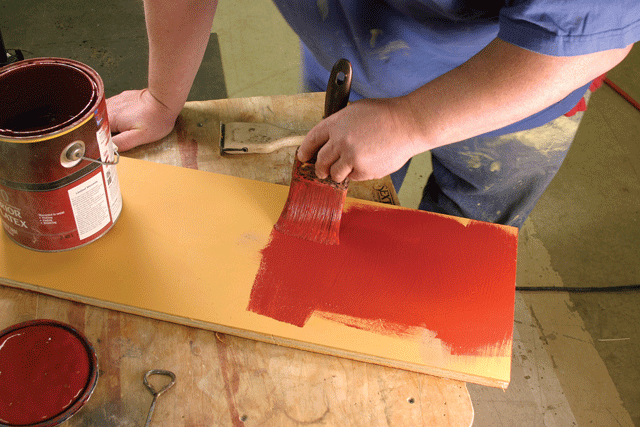



![Tooley Park Scriber Review [Discount Week of Feb 3 2025]](https://dev.popularwoodworking.com/wp-content/uploads/bfi_thumb/dummy-transparent-olcy6s63it1p9yp7uhusjas7c8kahafrhg9su7q9i0.png)

